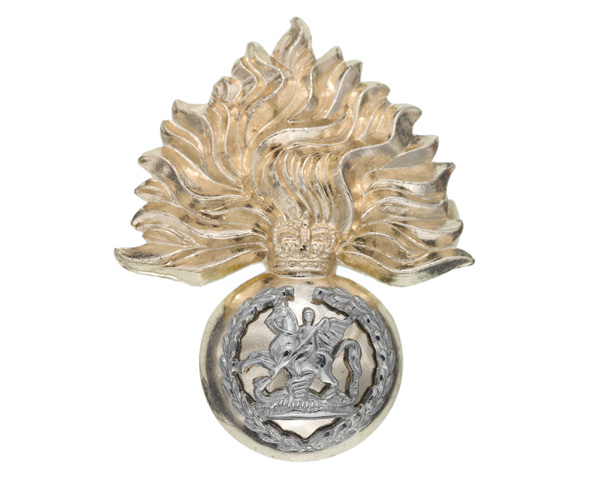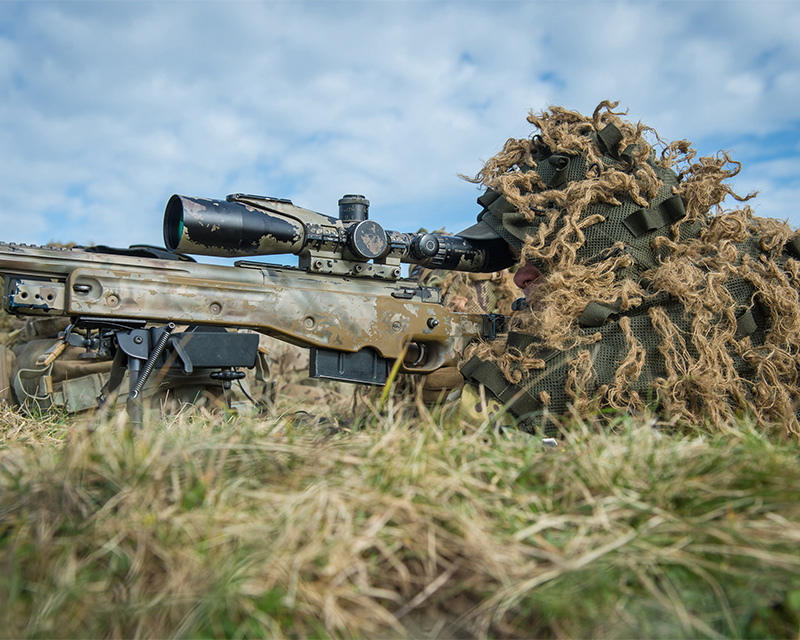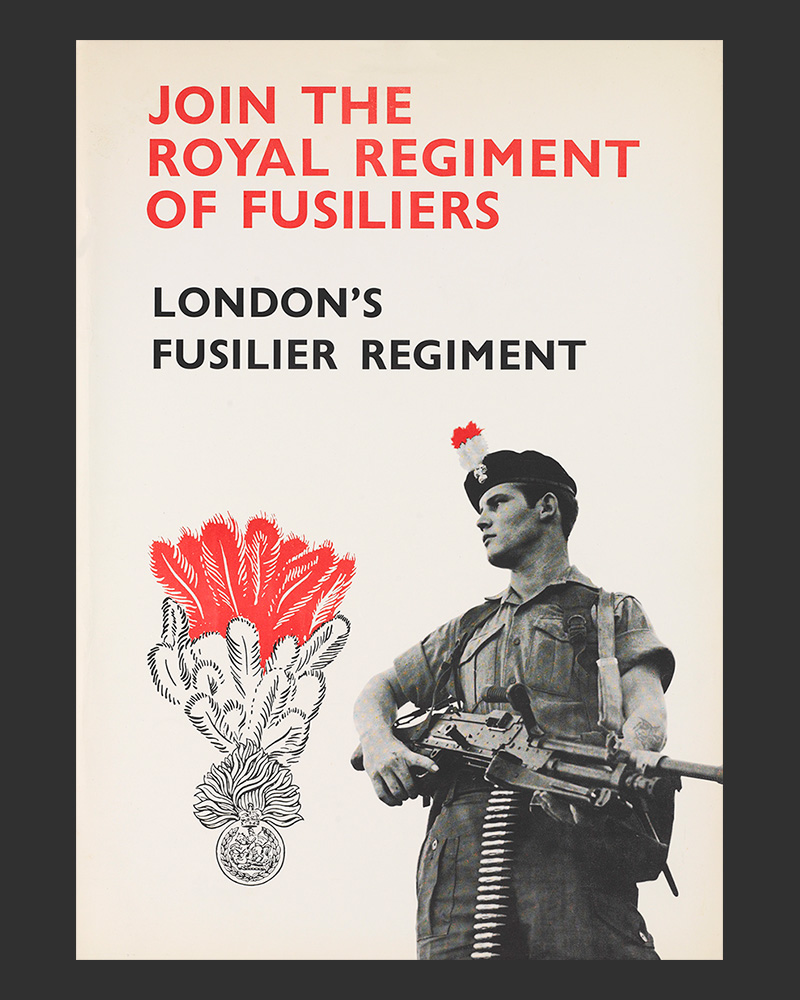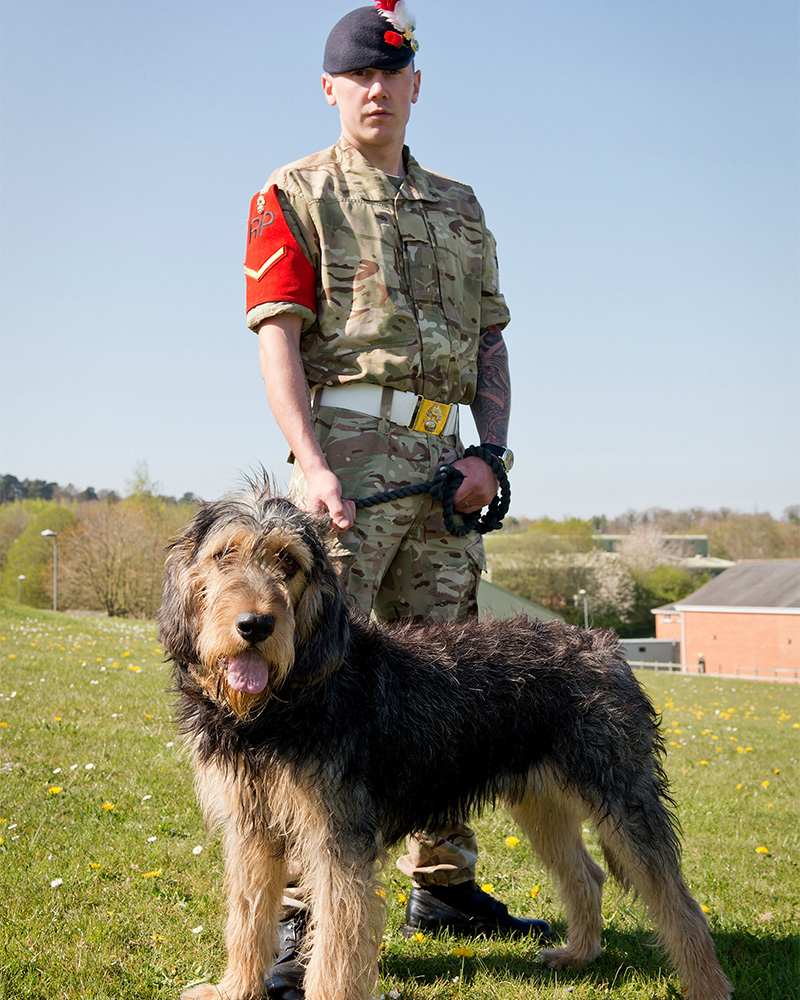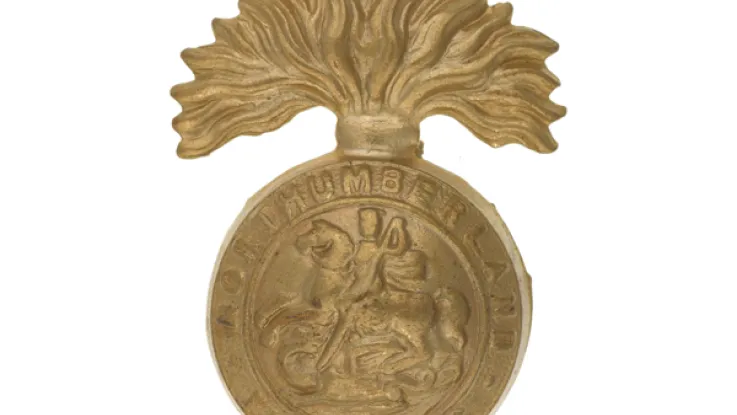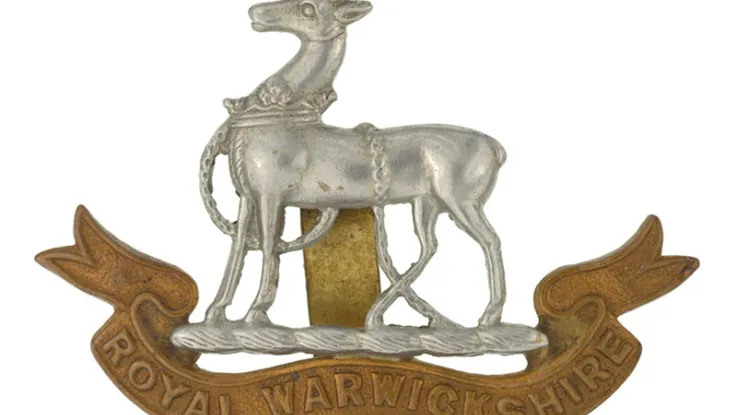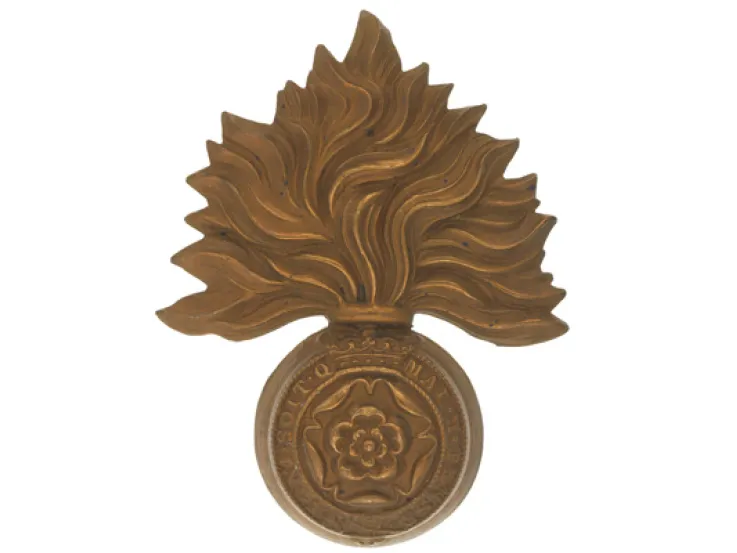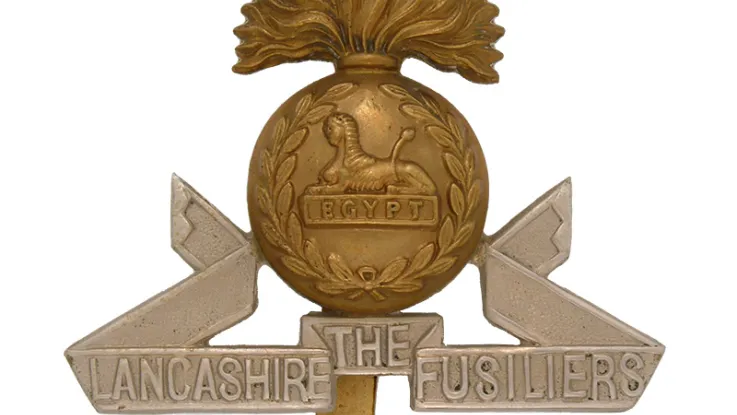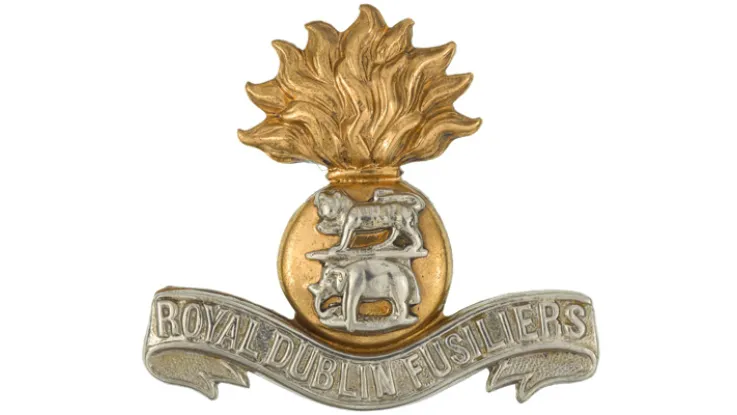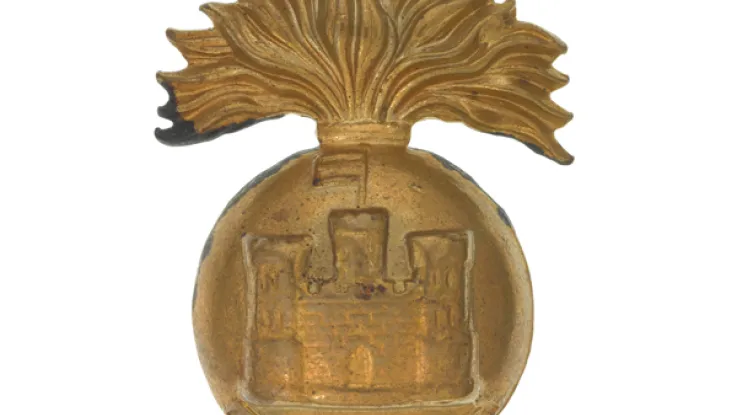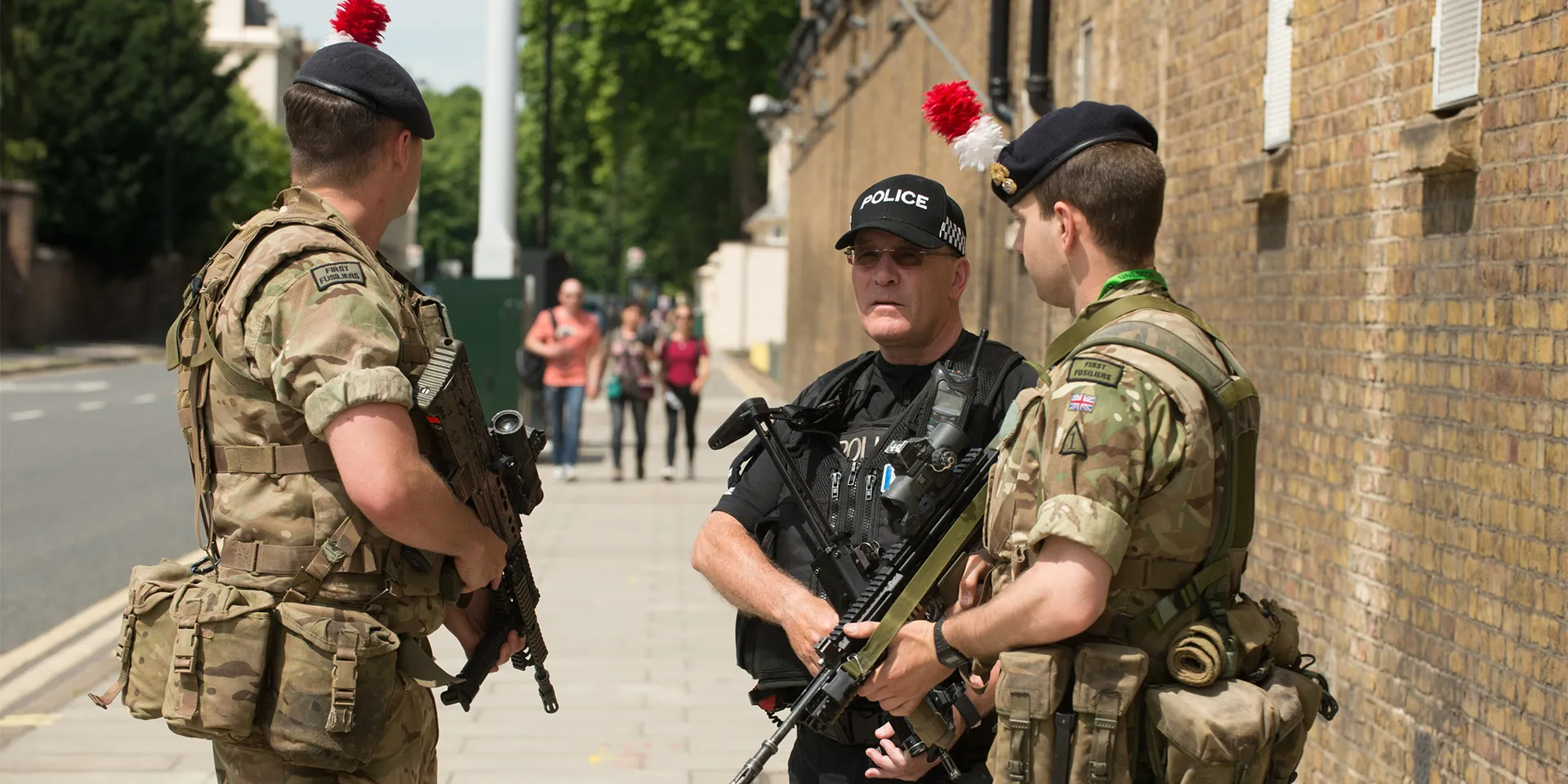
Soldiers of The Royal Regiment of Fusiliers during Operation Temperer, 2017 (© Crown copyright)
Origins
This unit was formed in 1968 by amalgamating the four regiments of the Fusilier Brigade: The Royal Northumberland Fusiliers, The Royal Warwickshire Fusiliers, The Royal Fusiliers (City of London Regiment) and The Lancashire Fusiliers.
Each of the new unit’s four battalions continued the traditions of one of the predecessor regiments, although the 4th (Lancashire Fusiliers) Battalion was disbanded after only a year.
The regiment's cap badge features an image of St George slaying a dragon, an emblem which was inherited from The Northumberland Fusiliers.
Deployments
Over the next two decades, the three remaining battalions alternated between Northern Ireland, West Germany and England, rarely all in one base at the same time. Exceptions included tours to Gibraltar and postings to Cyprus in 1977, 1985 and 1987 and the Falklands in 1983-84 and 1988.
In 1991, the 3rd (City of London) Battalion served during the Gulf War (1990-91). The following year, it was disbanded and absorbed by the remaining two battalions, with 1st Battalion now operating as armoured infantry and 2nd Battalion as light infantry.
1st Battalion deployed to Bosnia in 1995. It was joined there two years later by 2nd Battalion, which also served in Kosovo in 2000. The regiment went on to serve in Iraq in 2003-04 and 2005-07 and in Afghanistan during 2006, 2009 and 2013, as well as returning to its past postings of Germany and Northern Ireland.
More recently, the Fusiliers have deployed on exercise to Canada, East Africa and Eastern Europe.
Quiz
Why did the Fusiliers stop keeping an antelope as a mascot?
Until 2005, The Royal Regiment of Fusiliers kept an Indian antelope (or blackbuck) as their mascot. This long tradition, inherited from The Royal Warwickshire Fusiliers, came to an end because the blackbuck had become an endangered species. The regiment subsequently adopted a British Otterhound called 'George'.
Legacy
In 2014, the two remaining regular battalions merged. Today, 1st Battalion continues the traditions of all four of the unit’s predecessor regiments, including a red and white hackle inherited from The Royal Northumberland Fusiliers.
Regimental museums
The National Army Museum works with a network of Regimental and Corps Museums across the UK to help preserve and share the history and traditions of the Army and its soldiers.
Discover more about The Royal Regiment of Fusiliers by visiting The Fusilier Museum in Bury.

